Lawmakers duke it out over the debt ceiling while researchers look for silver linings
That’s the headline I would have chosen had I been one of the first to publish news of recent research from NYU Grossman School of Medicine through which scientists set out to learn why aging coincides with pigment loss in hair. The study was funded by the National Institutes of Health and the Department of Defense (for real), and the researchers discovered a possible cause: stuck stem cells.
Evidently, as they get older, a certain subset of little Tigger cells, called melanocyte stem cells, lose their ability to bounce back and forth between hair-making compartments, which prevents them from maturing into pigment-creating machines. In the next phase of their research, the scientists hope to figure out how to unstick them, thereby preventing or reversing the graying process in humans.
Color me intrigued, but for reasons other than you might think.
Initially, I questioned the funding and gathered, from a bit of digital dredging, that it’s not unusual for the DoD to toss money toward bizarre projects. Even though that, more or less, answered that, I still spent a few minutes musing with my other half about whether reversing gray hair and the military’s recruitment issues might have a strand of connection.
Mostly, I found myself asking why we have an almost innate opposition to gray hair in the first place. Our obsession with youth is, of course, at the root of the matter. This cascade of events is not unfamiliar: The discovery of a few rogue white hairs signals that we are moving out of our spring chicken years. The age at which that begins depends on intrinsic factors like genes and race, as well as on extrinsic influences like stress, grooming practices, and smoking. By the time we reach 50, the majority of us are sporting some silver. We feel our mortality bearing down on us. We fear we will be less viable, invisible even. We worry about our love lives, our jobs, our places in the world. Searching for the perceived stability of our glory days, we turn to bottles of dye.
I think many of us have the notion that this is a contemporary development and that the elderly of long ago suffered less from the effects of ageism, self-imposed or not, but history says otherwise. Except in cultures centered in oral history, where people in their senescence held value as keepers of traditional wisdom, the aged of ancient times were less venerated than tolerated.
From the aristocracy down to lower-class families and slaves, the realities of life for older people hinged predominantly on one factor: the individual’s ability to remain a functioning member of society, be it as a leading politician or as a child minder.
– Tim G. Parkin, Realities of Aging, Encyclopedia.com
We also presume, I believe, that eastern societies, with their adherence to Confucianism and filial piety, are better to their elders than those of us who live in the west. But, current studies show attitudes among Asian youth are actually more negative toward older generations than that of their western peers.
Essentially, across millennia, we’ve perfected the art of casting off our old people. No wonder we’re predisposed to dodging the gray! To be sure, it wasn’t until the 1956 development of a home color kit by Clairol, and its simultaneous marketing campaign, that our disposition around hair color really changed. We finally had a product that could free us from the tyranny of growing old. Never mind that our hair lost all manner of shading nuance, no one needed to know whether we used it or not!
The contributor of the above image to the Washington and Lee University The American Century webpage writes, “[The campaign] was designed by the agency’s only female copywriter, and stands as an important example of advertising with a tension between feminine empowerment and a reaffirmation of traditional gender roles.”
Was it, though? Was the ability to easily, secretly, and affordably cover our gray an example of feminine empowerment? Or were we, instead, buying into the patriarchal idea that our real hair color wasn’t good enough?
As with many of our youth-seeking practices, it’s mostly women who have born the burden of this particular anti-aging tactic. A whopping 85% of us report using some form of color, compared to just 38% of men. We also spend a lot of money doing it. Anne Kreamer, author of the 2007 book Going Gray: What I Learned about Beauty, Sex, Work, Motherhood, Authenticity, and Everything Else That Really Matters, calculated her investment across 25 years of hair coloring at $65,000.
My mother would be aghast. Partly owing to a stubborn adherence to what she considered practical spending, and partly because her dark, brown locks took a long time to give way, my mom never once colored her hair. She was an outlier. Even at 60 years old, her salt didn’t come close to outcompeting her pepper.
I, on the other hand, started noticing strands of silver at the age of 28. But, I am my mother’s daughter, with a little more crunch. There was no way I was going to drop the dollars required for regular professional interventions, and I was uneasy about the chemicals found in almost every option. I started with henna – an hours-long process that was a lot like smashing peanut butter and cow silage into my hair. A decade later, my patience for that had up and gone. I switched to vegetable-based, DIY dyes, which I rationalized were less toxic than the Clairols and L’Oreals of the world.
By the time I reached my mid-40s, I was better than 50 percent gray, and the color maintenance routine was out of control. That’s when I had my epiphany: I was relatively young. If I embraced the gray while I was still in decent physical shape, it might be less painful than it would be 20 years on, when the rest of me would surely be coming unglued.
So, I let it all go. Rather than cutting off the length to minimize the agony, I pinned it up and powered ahead with the unbridled sexiness that is only possible with a bi-color stripe. When strangers asked my kids if they enjoyed shopping with their grandmother, I shot invisible darts from my eyes and forced myself to smile through my explanations. Once I committed, I never looked back, even though the full grow-out took well over a year.
I’m now approaching the “age of unraveling” I foresaw in my 40s and am even more convinced I made the right decision. Despite the wave of graying that came with the Covid 19 pandemic, when salon closures and social distancing allowed folks to reacquaint themselves with their natural colors, I still get comments from women who believe they wouldn’t look good without color and who worry that going gray would strip away what little visibility and vibrancy they have left.
With all due respect, and all too much familiarity with examples of age discrimination in my life (employment recruiters, I’m looking at you) I think these beautiful beings are selling themselves short. Like the first Miss Clairol fans of the 50s, I think it’s all part of a system to keep us from stepping into our full selves as we age.
Ladies – and sure, okay, some of you gentlemen, too – if I said you might save $2,600 a year by doing absolutely nothing, I suspect I’d at least get your attention. Are we not ready, finally, to rid ourselves of our chemical dependencies and let our true colors shine? I can’t think of a better way to amp up our visibility than by embracing the real us.
We don’t need research to give us ways to flip the switch on hair color. We need science to help us support ways to teach empathy and appreciation for one another. Let’s bring back authenticity! Let’s stand in our power and create our own standards of beauty. This is wisdom rising out of the top of your head. This is your own personal silver lining. Seize the gray!
…please keep scrolling for just a bit longer…
Post Script: I’ve been wanting-like-crazy to share the names of some of the many other Substack writers I’ve come across in my travels here, and now seems like a good time. Perhaps there is an unrecognized, secret-society bias in my selection process. Most of the folks I read with consistency are wise women who are solidly planted in their silvering years.
Some have personal connections, like Courtney Oates, who grew up in the same town as me. Our mothers, both Nancys, taught us what it meant to be strong and compassionate. This past Valentine’s Day, in
, Courtney shared a piece about becoming the masters of our universe that I still think about.My writer compatriots craft stories about life and loss, like this one from Ramona Grigg at
. They write sweet essays about navigating the golden years with an aging dog, like Prue Batten down in Tasmania, in. And, they ask me to consider my capacity, my calling even, to be both maiden and crone, like Jan Blencowe in .And then, there’s all of you.
Together, we make up a congregation of humans who are out here doing the best we can at being thoughtful, powerful, compassionate, and real. When things get dicey, I take comfort in remembering that. Thank you!
~Elizabeth

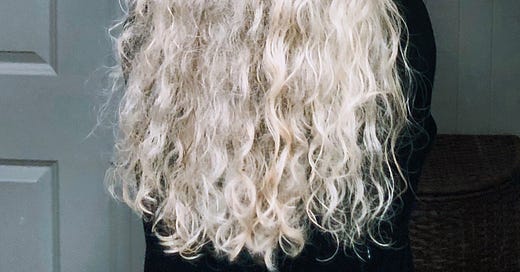


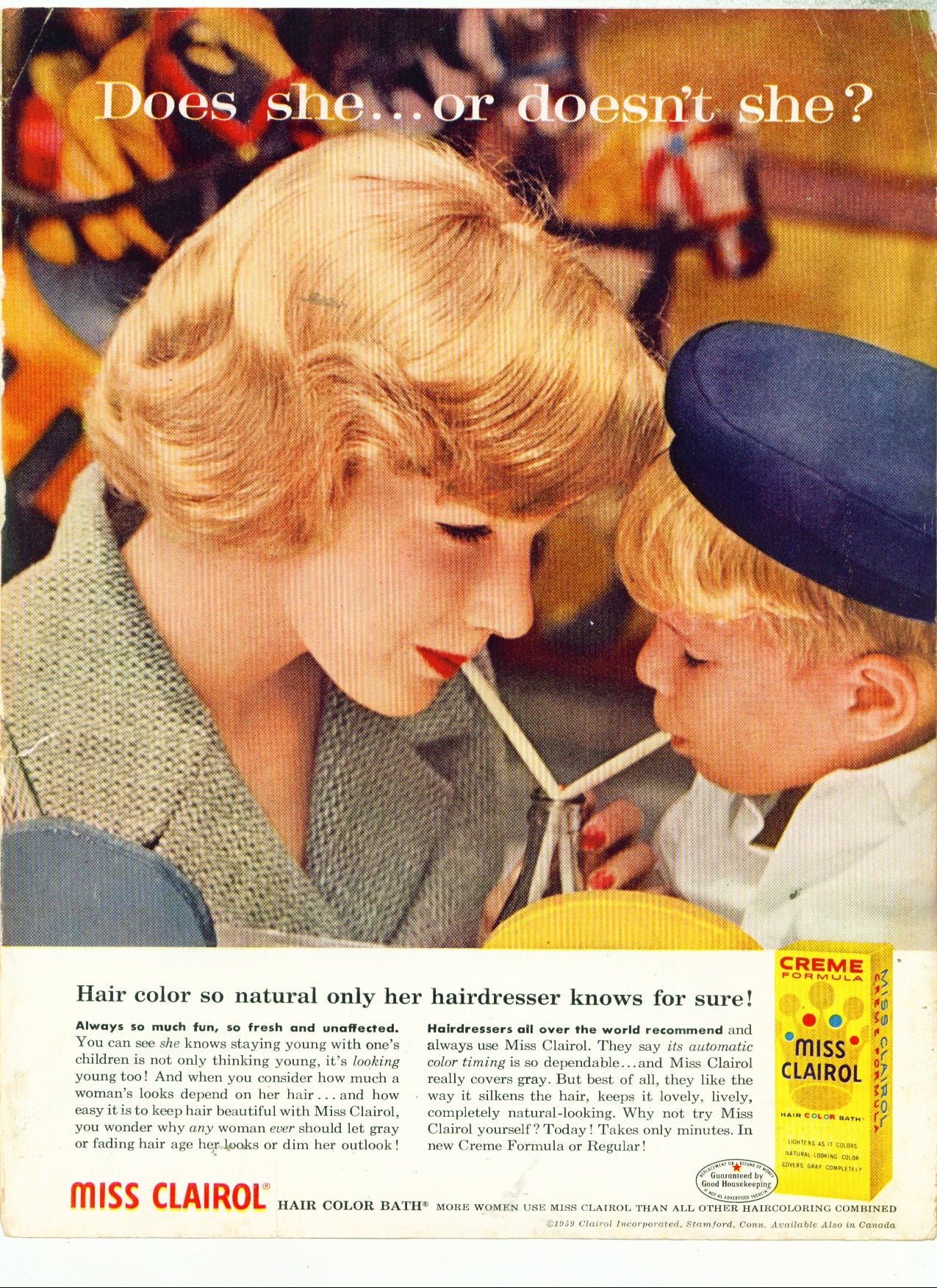
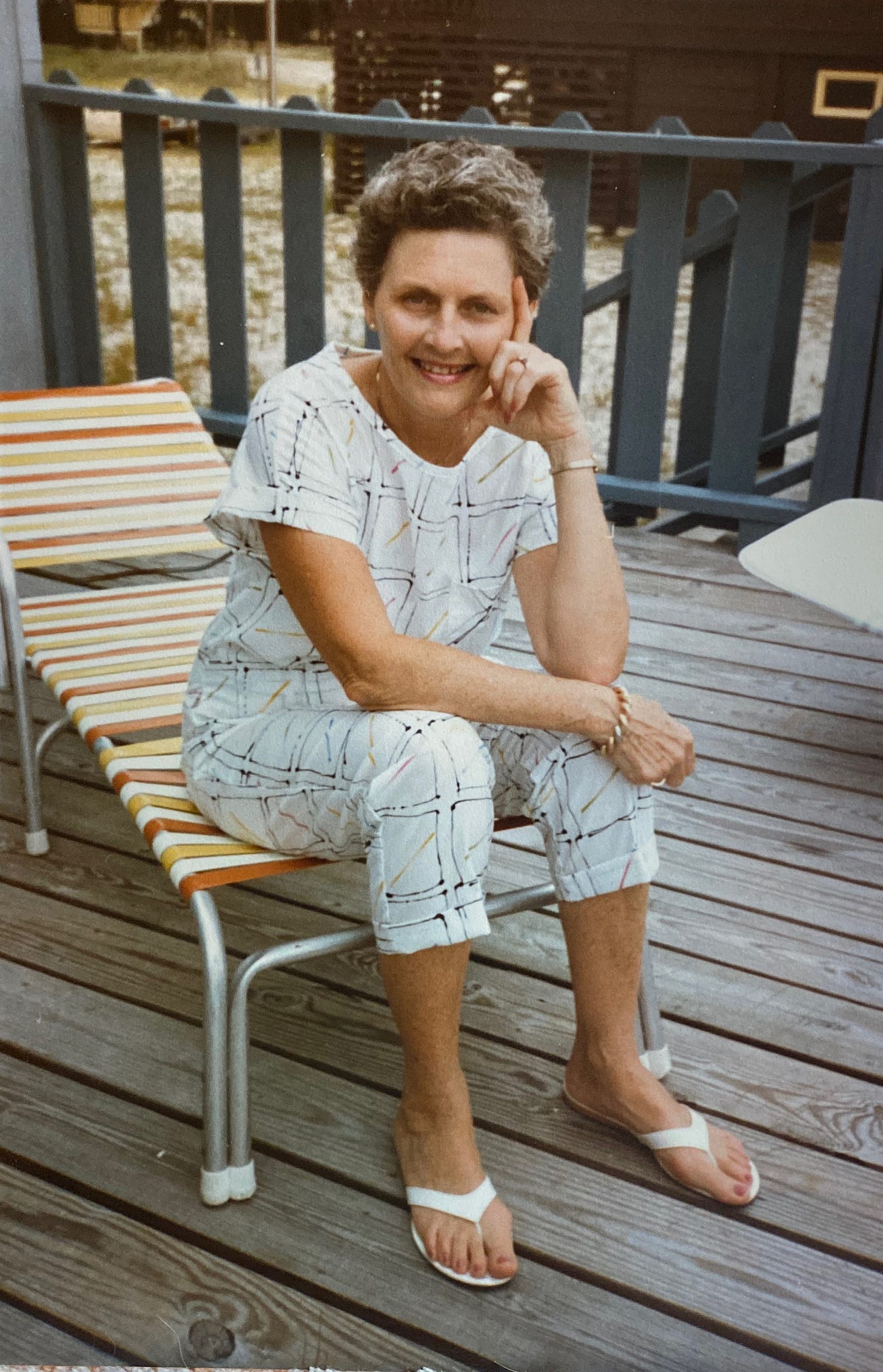
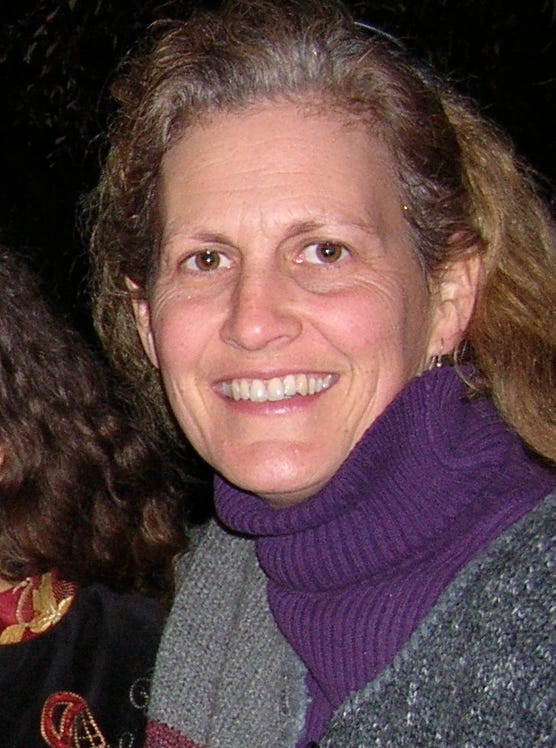
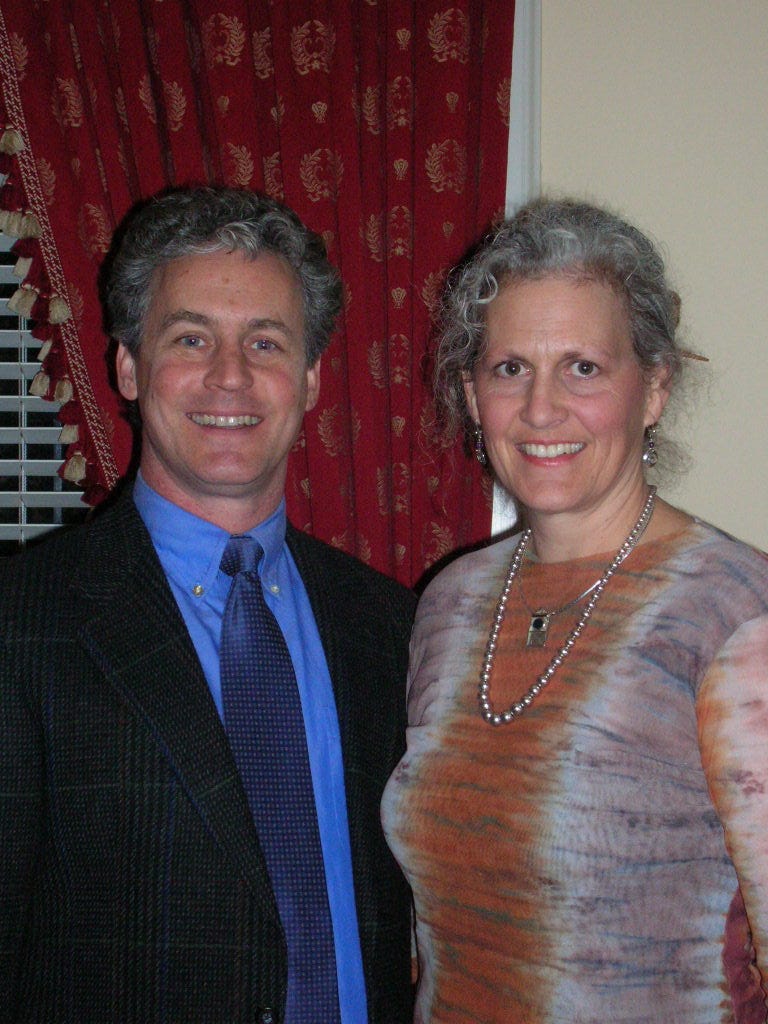
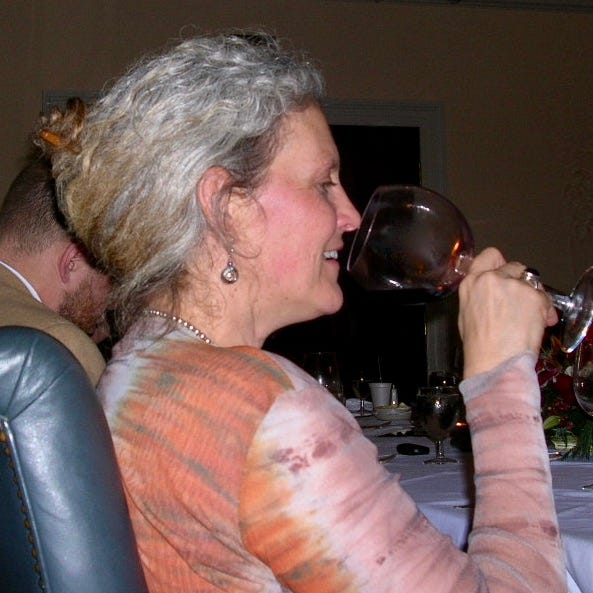
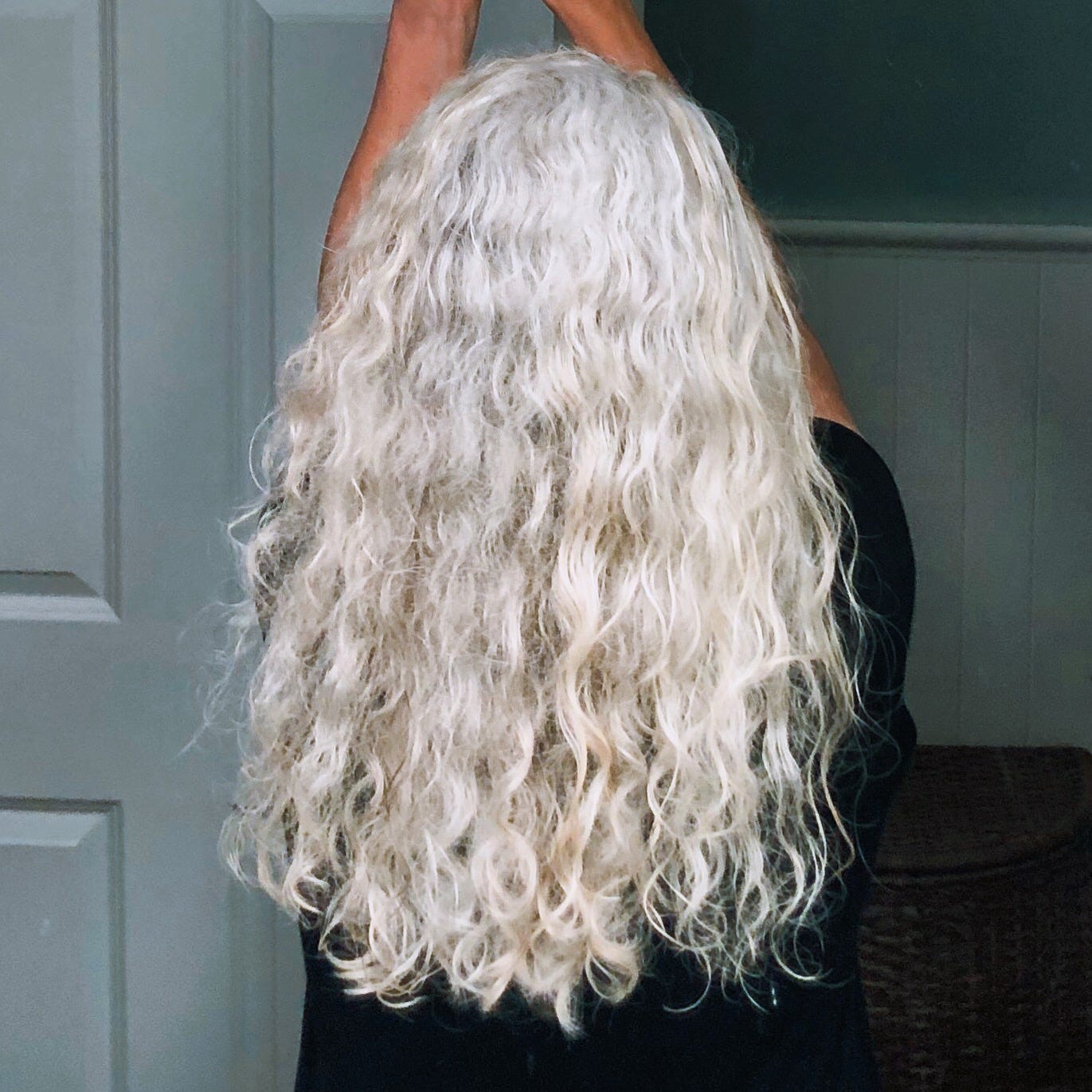
Elizabeth - this is classic! I love it all. Color me intrigued. Seize the gray! LOVE it all. And WOW! thank you for the PS shout out. That made my day!
Your hair is so beautiful !
I have a theory about gray hair. I think women want to be thought of as sexually desirable as long as they can. For their mates and strangers alike. It's fun to realize you're turning heads!
I think there's a very basic subconscious drive at work here. Men are not as attracted to women with gray hair because they are usually past child-bearing age. They can't have their babies. Even if the men don't want babies, I think it's something God did to ensure the future of the human race. Does that make any sense?